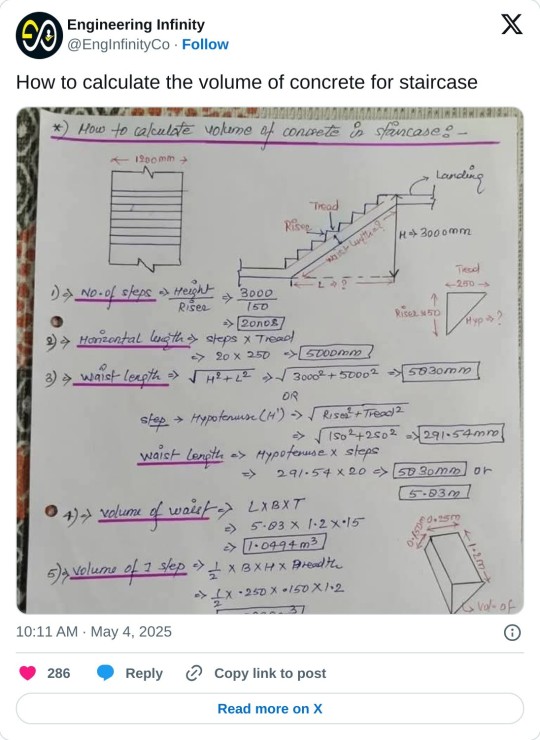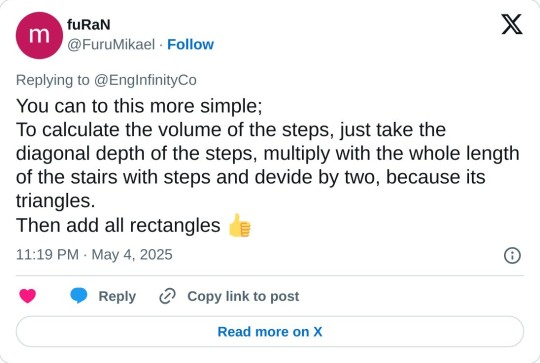#CALCULATE
Explore tagged Tumblr posts
Text
Candace Competition


Meditate
Calculate
#pnf#phineas and ferb#candace#candace flynn#polls#polls on tumblr#tournament polls#Candace Competition Round 1#Great Balls Of Water#Meditate#Calculate#0x52v0x53#Candace Competition
22 notes
·
View notes
Text
Webpreneurships Savings Calculator
2 notes
·
View notes
Text
Exploring Phone Number Probability and Statistics: Unraveling the Patterns
Phone numbers are a ubiquitous part of our daily lives, but have you ever wondered about the probability and statistical distribution of certain number combinations? From repeated digits to sequential patterns, the world of phone numbers is rich with mathematical curiosities. In this article, we'll dive into the fascinating realm of phone number probability and statistics, uncovering the patterns and quirks that make these numbers so intriguing.
Let's start with a simple question: What is the likelihood of a phone number containing repeated digits? To answer this, we need to consider the total number of possible phone numbers and the number of combinations that include repeated digits.
Using the North American Numbering Plan (NANP) as an example, a phone number consists of 10 digits, with the first three digits representing the area code, followed by a seven-digit local number. Assuming all combinations are equally likely, the probability of a phone number containing repeated digits can be calculated using the following formula:
Probability of repeated digits = (Number of combinations with repeated digits) / (Total number of possible combinations)
To find the number of combinations with repeated digits, we can use the principle of complementary counting. We'll first calculate the number of combinations without repeated digits and then subtract it from the total number of possible combinations.
The number of combinations without repeated digits can be calculated using permutations. There are 10 possible digits (0-9) for each position, and we need to select 10 distinct digits. The formula for this is:
Number of combinations without repeated digits = 10P10 = 10! = 3,628,800
Now, let's find the total number of possible combinations. Since each position can have any of the 10 digits, the total number of combinations is:
Total number of possible combinations = 10^10 = 10,000,000,000
Using these values, we can calculate the probability of a phone number containing repeated digits:
Probability of repeated digits = (10,000,000,000 - 3,628,800) / 10,000,000,000 ≈ 0.9999 or 99.99%
Surprisingly, the probability of a phone number containing repeated digits is extremely high, almost approaching 100%!
But what about other patterns, such as sequential numbers? The probability of a phone number containing a specific sequence of digits can be calculated using a similar approach. For example, the probability of a phone number containing the sequence "123" is:
Probability of sequence "123" = (Number of combinations with "123") / (Total number of possible combinations) = 10^7 / 10^10 = 1/1000 or 0.1%
This means that roughly one in every thousand phone numbers contains the sequence "123".
These probability calculations provide insights into the likelihood of encountering certain patterns in phone numbers. However, it's important to note that actual phone number allocation is not purely random and is subject to various constraints and regulations set by telecommunications authorities.
In addition to probability, phone numbers also exhibit interesting statistical properties. For instance, the distribution of phone numbers across different area codes and regions can provide valuable insights into population density, economic activity, and technological adoption.
Tools like https://opencarrierbox.com/ offer a convenient way to explore the statistical landscape of phone numbers. By analyzing large datasets of phone numbers, these tools can uncover patterns, trends, and anomalies that may not be apparent at first glance.
For example, by examining the distribution of phone numbers across different carrier networks, one can gain insights into market share, network coverage, and customer preferences. Similarly, analyzing the geographical distribution of phone numbers can reveal patterns of urbanization, migration, and regional development.
Moreover, statistical analysis of phone numbers can help identify potential fraud or misuse. Unusual spikes in the allocation of certain number ranges or suspicious patterns of activity can be detected through statistical techniques, aiding in the fight against phone-based scams and identity theft.
The study of phone number probability and statistics extends beyond mere curiosity. It has practical applications in various fields, such as telecommunications network planning, marketing strategies, and resource allocation. By understanding the underlying patterns and distributions, decision-makers can optimize their operations, target their efforts more effectively, and adapt to changing market dynamics.
In conclusion, the realm of phone number probability and statistics is a fascinating one, offering insights into the interconnected world we live in. From calculating the likelihood of repeated digits to analyzing the distribution of numbers across regions and networks, this field combines mathematical prowess with real-world relevance.
2 notes
·
View notes
Text
As a repeated jellybean counting contest winner, I wanted to share with you all my secret so that you can win prizes too this holiday season.
As a young child and adult, I have used this method and won each time. You can guess the volume in this odd unit using these steps.
Identify the shape of the jar. Is it a cube, rectangular prism or a cylinder?
What I'm describing below is for a cylinder, the most common jar shape.
First, obtain RADIUS: If you are allowed to touch and pick up the jellybean jar, you can count jellybeans in a straight line across the bottom of the jar. If you are disallowed from touching the container, just count across the the top in a straight line. The full line across of this circle is known as the diameter. Half the line across is known as the radius. You can count all the way across and then divide in half. You may be cutting the jellybean in half and get a decimal when you do this. No problem.
Second, count your HEIGHT: This is the easy step. You just count the front face of the container. Count jellybeans in a straight line up the side of the jar. This is your height.
Plug and calculate: For a cylinder jar, your volume can be found by calculating 3.14 x RADIUS² x HEIGHT.
So multiply your radius first since PEMDAS tells us the exponent needs dealt with first. Squaring a number is just that number multiplied by itself. After you have that, multiply by pi and by the jellybean height.
The answer you get could be a fraction or decimal. More than likely, the person who put the jellybeans in the jar did not include halved beans. So round up your number if it ends in .5 or higher. And round down to the nearest whole number if it ends in .4 or lower.
**If you have a complex jar shape, mentally cut the jar where the shapes change! Then calculate using the different volume formulas.
I hope this helps someone win a gift card or impress someone at a Christmas party!




#jellybean#contest#counting#jar#party game#party#games#planning#volume#math#win#calculate#find the volume#guess the jellybeans#beans#candy
6 notes
·
View notes
Text
LIBRARY WRAPPED
You checked out... probably some stuff? Thanks for doing that :)
Used our wifi maybe? For something?
Look we actually don't know what genres you read or how many times you renewed Gender Queer.
We don't want to know.
Our gift to you is privacy.
Take it.
Be free.
#wrapped#public libraries#privacy#we DO have aggregated statistics and you will be seeing those in January because we calculate them at the actual end of the year#just sayin#everything else is in a vault that is purged regularly and the answer to anyone asking to see it is 'come back with a warrant'
25K notes
·
View notes
Text
Calculate Mean Median Mode and Standard Deviation in Excel
Learn how to calculate mean, median, mode, and standard deviation in Microsoft Excel. Watching this video will equip you to be … source
0 notes
Link
#busttohips#busttowaist#calculate#hipstobust#hipstowaist#knittingcalculator#sidedecreases#sideincreases#waisttobust#waisttohips
0 notes
Text



1 note
·
View note
Text

Mumbai’s commercial real estate scene is buzzing with activity, and for good reason. Whether you’re a seasoned investor or a business owner looking to park your capital wisely, commercial spaces offer more than just four walls — they offer long-term potential. But before jumping in, it’s essential to understand how ROI (Return on Investment) works, especially in high-potential pockets like Andheri East, SEEPZ, Marol, etc. These areas aren’t just growing-they’re transforming into investment magnets.
What is ROI in Commercial Real Estate?
ROI in commercial real estate refers to the annual return you earn on a property relative to its total investment cost. It is typically expressed as a percentage and helps investors evaluate the profitability of a property.
Basic ROI Formula:
ROI = (Annual Net Profit / Total Investment) x 100
Example: If you buy an office space for ₹2 crore and it gives you an annual rental income of ₹14 lakh after expenses, the ROI is:
ROI = (₹14,00,000 / ₹2,00,00,000) x 100 = 7%
Of course, this is a simplified version. Other factors such as capital appreciation, property tax, maintenance, loan interest, and occupancy rates also impact ROI.
Factors Affecting ROI in Today’s Market
1. Location: A prime commercial location with business-friendly infrastructure guarantees better returns.
2. Tenant Profile: Long-term leases with reputable tenants ensure stable income.
3. Demand & Supply: High demand with limited supply leads to better rent and higher occupancy.
4. Operational Expenses: Lower maintenance and management costs = higher net returns.
5. Capital Appreciation: Some locations see significant property value appreciation, boosting overall ROI.
Why Andheri East, SEEPZ, and Marol Are ROI Goldmines
Andheri East, SEEPZ, and Marol have emerged as hotspots for commercial investments, particularly post-pandemic, as businesses shifted towards decentralised office models.
Proximity to International Airport: A big plus for global companies and frequent flyers.
Metro & Connectivity: Multiple metro lines, highways, and rail connections make commuting easy for employees.
SEEPZ & MIDC Zones: Being government-supported economic zones, they attract large IT, tech, and export companies.
Affordable Grade-A Offices: Compared to BKC or Lower Parel, Andheri East still offers quality office spaces at relatively lower prices, improving the ROI for first-time investors.
Case in Point: A 1,200 sq.ft. office in Marol recently leased at ₹75 per sq.ft., offering a gross rental income of ₹100,000/month. Purchased at ₹1.6 crore, the investor is looking at a 7.5% ROI, not including capital appreciation.
Such numbers are encouraging in today’s market where FD returns hover around 6-6.5% and residential yields average 2-3%. This makes commercial spaces in East Andheri a compelling choice.
What Can You Expect in 2025?
Demand for mid-sized offices is rising due to hybrid work models.
Many MNCs are consolidating operations in suburban business districts.
SEEPZ 2.0 expansion and metro development are pushing infrastructure growth.
With careful selection and expert guidance, an investor can expect 7-9% ROI in well-leased commercial properties in areas like Marol and SEEPZ.
Commercial real estate continues to be a dependable asset class for steady income and long-term wealth creation. However, the key lies in choosing the right property in the right location. If you’re considering investing in Andheri East or nearby commercial hubs, a consultation with local experts can help you make a more informed decision.
Related Read: Understanding How Location Affects Commercial Real Estate Value
0 notes
Text
Calories Burned During Exercise and How to Calculate It
Losing fat is dependent on creating a caloric deficit, which means nailing at least one (and ideally both) of two scenarios: eating fewer calories than needed to maintain your current weight and burning more calories than you consume. That last part can be tricky. Figuring out the number of calories burned through exercise is no small task, as there are many factors that impact that total (e.g.,…

View On WordPress
0 notes
Text
I found a useful tool to estimate the volume (in cubic feet, cubic yards, or cubic meters) and weight (in tons or tonnes) of asphalt (tarmac) needed for projects. I think there must be someone also need to Asphalt Calculator
1 note
·
View note
Text
Candace Competition


Vegetarian Cook
Calculate
#pnf#phineas and ferb#candace#candace flynn#polls#polls on tumblr#tournament polls#Candaec Competition#Candace Competition Round 2#Great Balls Of Water#Vegetarian Cook#Calculate#0x30v0x31
12 notes
·
View notes
Text
Webpreneurships Salary Calculator
2 notes
·
View notes
Text
#goal#100#percent#success#target#achievement#business#sale#seller#performance#figure#hundred#job#mathematics#numbers#percentage#ambition#ambitious#board#calculate#symbol#sign#3d#illustration#red#white#background
0 notes
Text
What's your website worth?
The Worth of Web Calculator can be used to determine the value of a website. To check the overall rankings of my websites is something I find appealing. The revenue, traffic, authority, user experience, and other specific categories are nicely broken down.
Entering a website address is all that is required to access this free service and view the statistics. Hit the jump to try it out.
#online tool#calculator#tools#SEO#website development#calculate#web technology#web technologies#web coding#web-coding
0 notes